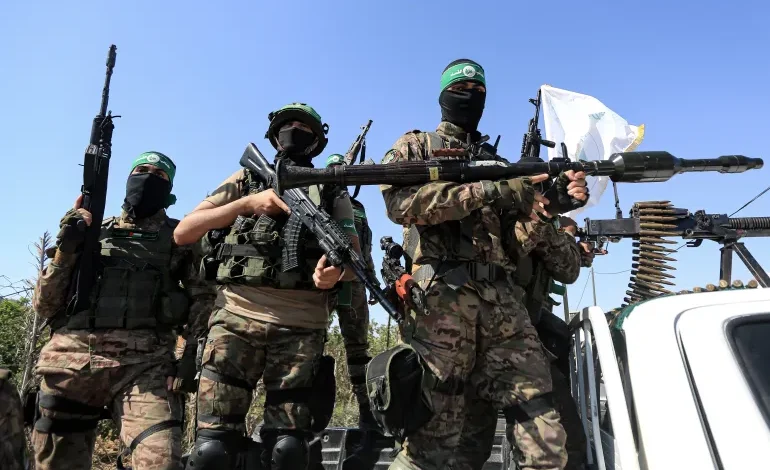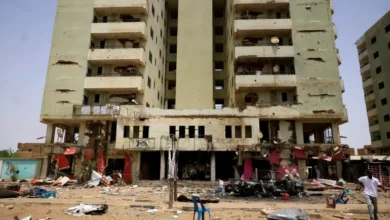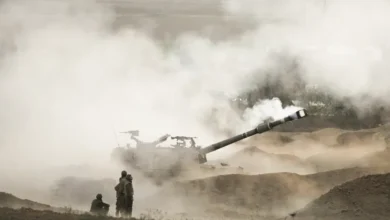Analysis: Is Hamas a more sophisticated force than Israel imagined?

The tactics we have seen Hamas use in their attack on Israel last Saturday have been some of their most sophisticated yet.
The group used air, sea and land in what in military terms is known as multi-domain operations. It carried out initial attacks on Israeli observation posts using drones before its massive rocket attacks overwhelmed the Israeli Iron Dome defences.These were what are referred to as shaping operations – in essence preparing for the next stage, the physical entry into Israel.
Next was an unprecedented physical infiltration, attacking Israel from multiple directions, attacking Israeli military targets killing and capturing soldiers and capturing military equipment.
Underpinning all these activities has been the use of the psychological element – including recording and broadcasting attacks in Israeli border communities and a music concert as well as capturing Israeli soldiers and civilians and taking them back into the Gaza Strip.
Hidden planning
Most of the planning that Hamas undertook would have been at a time when Israel was going through political tensions that had rocked the country for months.
The cause of the divide was a raft of legislation pushed by Prime Minister Benjamin Netanyahu’s right-wing government – the most right-wing ever – that would have weakened the judiciary to a point where it could no longer function as intended, as its opponents repeated in weekly protests.
That unrest would have provided what is known as “background noise” that would have distracted Israeli intelligence.
Hamas will have studied Israeli intelligence gathering, identified Israeli sources and kept them focused elsewhere, in order to hide their preparations.
According to news reports, Hamas also has invested heavily in tunnel infrastructure, constructing an extensive network of underground passages that enable them to physically bypass Israeli checkpoints and mount surprise attacks.The use of tunnels and underground facilities will almost certainly have aided the concealment of preparation from Israeli intelligence.
Developing threat
Hamas appears to have learned from various sources, utilised lessons from past encounters with Israeli forces, studied the tactics employed by fighters in Jenin in 2002, and incorporated their own innovations.
They also seem to have taken inspiration from Hezbollah’s military infrastructure and rebel warfare strategies.
Past encounters with Israeli forces, particularly during the 2014 assault on Gaza, have taught Hamas the value of urban warfare and how to make the most of improvised explosive devices (IEDs), tunnel networks, psychological warfare and asymmetric warfare.
Jenin lessons
Hamas appears to have also drawn specific insights from the tactics employed by the Jenin fighters during the Battle of Jenin in 2002, which has become a symbol of Palestinian resistance.
In April 2002, an Israeli assault on the Jenin refugee camp killed at least 52 Palestinians, including women and children, according to Human Rights Watch. There were 23 Israeli soldiers killed and several others injured.
One of the key lessons Hamas may have learned from the Battle of Jenin was the effectiveness of IEDs in inflicting casualties and disrupting Israeli military operations. IEDs are low-cost and easily concealable, making them a valuable tool for asymmetrical warfare. Hamas has since incorporated IEDs into its arsenal, using them to target Israeli military vehicles, patrols and installations.
Should Israel launch a ground offensive into Gaza, we will almost certainly see these tactics used again.Another likely lesson from the Jenin fighters was the importance of strategic mobility and surprise, the utilisation of a network of tunnels to move fighters and supplies, evade Israeli forces, and launch surprise attacks.
An uneven contest
At the end of the day, Hamas is fighting an army that has sophisticated heavy weaponry and air power.
In the face of that weaponry, Hamas has nothing more than homemade IEDs, rockets and light weapons supplementing a small number of more sophisticated light weapons it managed to smuggle in.
This is why the group relies on tactics – using a strategy of hit-and-run attacks, ambushes and sniper fire to minimise their own casualties and maximise the impact of their operations by reducing direct confrontations.
What is not clear is the end state Hamas expects from this latest attack as it is not likely that there will be wider military support for it from the region.
It remains to be seen what the impact of this will be on already stalled diplomatic efforts to negotiate between Israel and the Palestinians and between Palestinian factions.
However, what is apparent is that the suffering will be borne by the innocent civilians in Gaza who are being subjected to a fierce operation by air that leaves nowhere for them to go, and who analysts expect will also soon be invaded by land. The civilians of Israel are also suffering, as they mourn their dead and search desperately for the missing.
So, will Hamas’s operational surprise turn into a strategic loss? Only time and more lives will tell.











